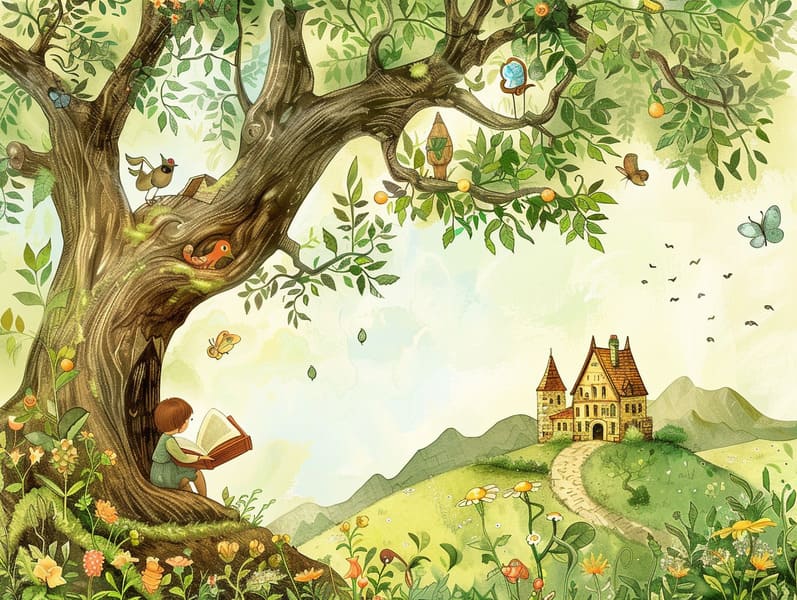A Brief History of Grimm's Fairy Tales with the Undying Loveliness.
A Brief History of Grimm's Fairy Tales with the Undying Loveliness.
Blog Article

Fairy tales have deep roots. These stories have been told from one generation to the next ages before they were ever documented. They arose from a variety of cultures, including African traditions. They were initially shared among older generations, often carrying themes and messages concerning the societal norms and beliefs of the time.
The renowned Brothers Grimm, Jacob and Wilhelm (the Grimm brothers), were among the first to compile and release many of these beloved fairy tales. Their published works, "Grimm's Fairy Tales," included narratives like "Cinder Maid," "Hansel and Grethel," and "The True Story of Snow White," which have since become classics in the world of famous fairy tales. Similarly, the Danish author's charming tales, such as "The Mermaid's Tale," and "The Story of the Ugly Duckling," have won hearts worldwide, cementing their place in the pantheon of iconic fairy tales.
Even though they are old, classic fairy tales remain as relevant as ever, especially as kids' bedtime tales. These enchanting tales are now available in different formats, including vibrantly illustrated books, captivating animations, and internet fairy tales.
Their continued relevance can be credited to several enchanting factors:
Moral Lessons: Traditional fairy tales often illustrate important moral lessons. Stories like "The Story of the Boy Who Cried Wolf" teach the importance of integrity, while "The Race of the Tortoise and the Hare" underline the merits of persistence and unassuming nature. These narratives offer young ones clear distinctions between truth and falsehood, helping to shape their moral compass in a gentle yet significant way.
Warmth and Understanding: Classic fairy tales frequently depict protagonists facing problems and hurdles, fostering children to understand with their struggles and rally behind their triumphs. For instance, "The Tale of Beauty and the Beast" emphasizes the merit of looking deeper to appreciate the inner being of a being, developing compassion and understanding.
Cultural Awareness: Many classic fairy tales are rich in the cultural contexts from which they grew. Reading these tales can provide captivating looks into different ways of life, promoting a sense of world awareness and acknowledgment.
Creativity and Fantasy: The enchanted elements in ancient fairy tales—enchanted forests—enhance children’s visions and dreams. These fairy tales carry readers to supernatural realms, activating inventive thinking and a sense of wonder that endures a lifetime.
Traditional fairy tales are not only charming but also edifying. They act as whimsical tools in building various mind and heart abilities in young ones. When traditional fairy tales are read aloud, they advance communication skills by offering new words and intricate sentence structures. This practice also strengthens listening abilities and attention span, as children pay close attention, excited to see what happens next.
Furthermore, contemplating the themes and characters of fairy tales can develop problem-solving abilities and evaluative skills. Little ones are taught to identify patterns, predict happenings, and grasp cause and effect. These discussions also aid children verbalize their thoughts and feelings, nurturing their emotional intelligence.
In today’s cyber age, the existence of free fairy tales online has made these tales more acquirable than ever. Websites and online apps present huge assortments of old fairy tales that can be browsed or played anytime, anywhere. Fairy tales read out loud are particularly in demand, providing an fun way for young readers to relish these fantastical tales. Read-aloud books and narrated videos carry characters and settings to life, often paired with charming soundtracks and musical scores that augment the narrative experience.
The lasting appeal of classic fairy tales lies in their ability to modify to present days while keeping hold of their basic principles. Contemporary updates of these stories often highlight more varied protagonists and modern settings, making them understandable to today’s audience. However, the basic principles of braveness, benevolence, and fair-mindedness remain unchanged, continuing to impact young listeners of all ages.
Old fairy tales also offer a sense of security and homeliness. They supply a coherent narrative with a transparent beginning, middle, and end, often winding up click here with the ending of conflicts and the triumph of right over wrong. This predictability can be relieving for young readers, rendering a sense of invariability in an constantly changing world.
Old fairy tales continue to delight and teach new generations, maintaining their loveliness and importance in modern society. As kids' bedtime tales, they extend a perfect blend of captivation and insight, fostering moral values, empathy, and creativity. The existence of online storybooks and the commonness of fairy tales narrated validate that these traditional stories remain accessible to new generations.
By upholding and communicating these narratives, we continue to admire the rich tapestry of cultural heritage and cultural heritage. Whether you are seeing a vibrantly illustrated book, accessing a online collection, or listening via an sound book, the beauty of old fairy tales is always within reach. These tales demonstrate of the continued spell of fairy tales and its ability to unite us across centuries and lands.
Whether you are reading a gorgeously illustrated book, browsing a digital collection, or listening via an audiobook, the captivation of famous fairy tales is always within reach.
These tales point out of the immortal effect of narratives and its ability to join us across time and space, establishing a link that charms and informs alike.